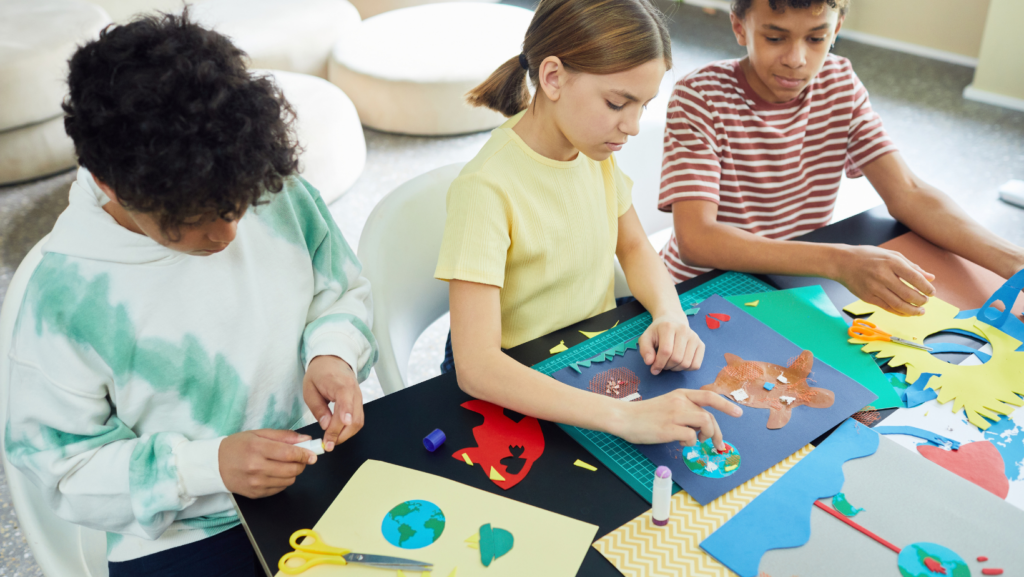”
Key Takeaways
- Embrace Diversity: Learning to live together involves recognizing and appreciating diverse cultures, fostering unity through mutual respect and shared values.
- Cultivate Essential Skills: Empathy, active listening, and effective communication are critical for navigating conflicts and building meaningful relationships among different backgrounds.
- Promote Education Initiatives: Implementing programs focused on cultural awareness and conflict resolution enhances interpersonal skills necessary for harmonious living.
- Engage the Community: Community events and collaborative projects unite individuals, creating shared experiences that foster understanding and solidarity.
- Recognize and Address Challenges: Acknowledge cultural differences and social barriers that hinder coexistence, and take intentional steps to build inclusive environments.
- Value Collaborative Efforts: Encourage respect and tolerance among individuals to promote cooperation and peaceful coexistence in diverse communities.
In an increasingly interconnected world, the ability to live together harmoniously has never been more crucial. As diverse cultures, ideas, and lifestyles converge, understanding and cooperation become essential for fostering peaceful coexistence. Learning to live together goes beyond mere tolerance; it’s about embracing differences and finding common ground.
This journey involves developing empathy, enhancing communication, and cultivating respect for one another. By engaging in meaningful dialogues and shared experiences, individuals can break down barriers and build lasting relationships. The path to unity may be challenging, but the rewards of a cohesive, supportive community are invaluable.
Learning to Live Together
 Learning to live together involves recognizing and appreciating diversity while fostering unity and mutual respect. It requires commitment to shared values that promote collaboration and understanding.
Learning to live together involves recognizing and appreciating diversity while fostering unity and mutual respect. It requires commitment to shared values that promote collaboration and understanding.
Learning to live together refers to the ongoing process of cultivating relationships among individuals from different backgrounds. This concept encompasses empathy, active listening, and the ability to navigate conflicts constructively. Emphasis is placed on creating inclusive environments where everyone feels valued. By acknowledging and celebrating cultural differences, individuals foster a sense of belonging among diverse groups, facilitating deeper connections.
The significance of learning to live together extends beyond individual interactions; it shapes societal cohesion. Cohesive communities benefit from various perspectives, which drive innovation, creativity, and problem-solving. Furthermore, this principle encourages peaceful coexistence, reducing potential conflicts that arise from mistrust and misunderstanding. When individuals engage in shared experiences, they build strong networks and support systems, ultimately enhancing societal welfare and stability.
Key Principles of Learning To Live Together
 Learning to live together revolves around essential principles that cultivate understanding and collaboration among diverse groups. Two key principles include respect and tolerance, alongside effective communication.
Learning to live together revolves around essential principles that cultivate understanding and collaboration among diverse groups. Two key principles include respect and tolerance, alongside effective communication.
Respect and tolerance form the foundation of harmonious coexistence. Respect involves recognizing the inherent dignity of every individual, regardless of their background or beliefs. Tolerance requires accepting differences without judgment. Together, these principles encourage open-mindedness and foster an environment where everyone feels valued. Individuals practicing respect and tolerance are more likely to engage in collaborative efforts that benefit the entire community, promoting peaceful coexistence and mutual support.
Effective Communication
Effective communication enhances interactions among individuals from varied backgrounds. Clear communication includes active listening, which allows for better understanding and fosters trust. It involves expressing thoughts and feelings honestly while remaining receptive to others’ views. By prioritizing effective communication, individuals can navigate conflicts constructively, ensuring that all voices are heard. This principle strengthens relationships, encourages cooperation, and cultivates a sense of belonging within diverse communities.
Strategies for Promoting Learning To Live Together
Promoting learning to live together involves intentional strategies that foster understanding and collaboration among diverse individuals. Effective approaches include educational initiatives and community engagement.
Educational Initiatives
Educational initiatives play a crucial role in cultivating skills needed for harmonious living. Programs that focus on cultural awareness, conflict resolution, and empathy training enhance interpersonal abilities. Workshops and seminars conducted in schools and community centers provide participants with tools for respectful dialogue and collaboration. Curricula that incorporate diverse perspectives encourage students to appreciate different cultures and lifestyles. Implementing peer mentoring programs creates opportunities for individuals to share experiences and perspectives, building connections across various backgrounds.
Community Engagement
Community engagement fosters a sense of belonging and collaboration within neighborhoods. Diverse events, such as cultural festivals and community forums, promote interaction among individuals from different backgrounds. Volunteering opportunities unite individuals toward common goals, creating shared experiences that strengthen relationships. Initiatives that encourage collaborative projects, like community gardens or art programs, allow residents to work together, fostering solidarity and understanding. Open discussions about local issues enhance transparency and build trust among community members, paving the way for a more inclusive environment.
Challenges in Learning To Live Together
Learning to live together encompasses various challenges, particularly around cultural differences and social barriers. These obstacles require thoughtful approaches to foster unity and understanding.
Cultural Differences
Cultural differences often manifest in communication styles, values, and traditions. Misunderstandings can arise when individuals interpret behaviors based on their cultural backgrounds. For instance, direct communication may be valued in some cultures, while indirect communication is preferred in others. Recognizing these variations demands open-mindedness and a commitment to learning. Engaging in cultural exchange programs or multicultural workshops enhances awareness and appreciation of diverse perspectives. Through these efforts, individuals can bridge gaps, promote empathy, and cultivate stronger relationships.
Social Barriers
Social barriers, including socioeconomic disparities and preconceived notions, hinder the learning-to-live-together process. Individuals from different backgrounds may face challenges in accessing resources, leading to feelings of exclusion. Stereotyping can further exacerbate tensions, preventing genuine connections. Building inclusive environments calls for intentional outreach and collaborative initiatives. Programs focusing on community-building activities that encourage participation can help dismantle social barriers. Encourage dialogue that facilitates understanding and collaboration during these activities to promote a sense of belonging and collective identity. Addressing social barriers paves the way for stronger, more cohesive communities.
Learning to live together is a vital journey in today’s diverse world. It calls for individuals to actively engage with one another and embrace differences while fostering unity. By prioritizing empathy, communication, and respect, communities can create an inclusive environment where everyone feels valued.
The ongoing commitment to understanding and collaboration can lead to stronger relationships and a more cohesive society. As individuals work together to overcome challenges, they not only enhance their own lives but also contribute to the greater good. Ultimately, the pursuit of harmonious coexistence enriches communities and paves the way for a brighter future.



